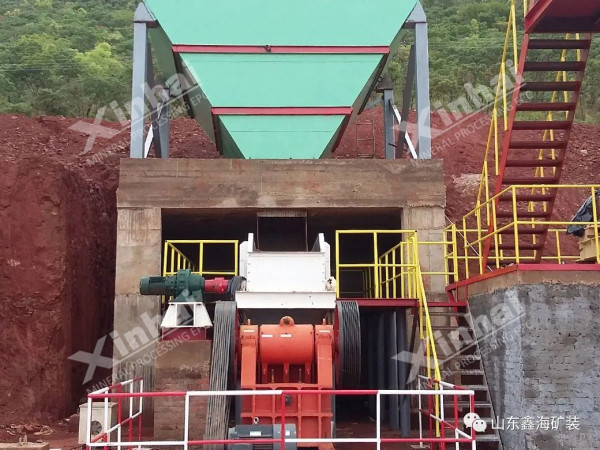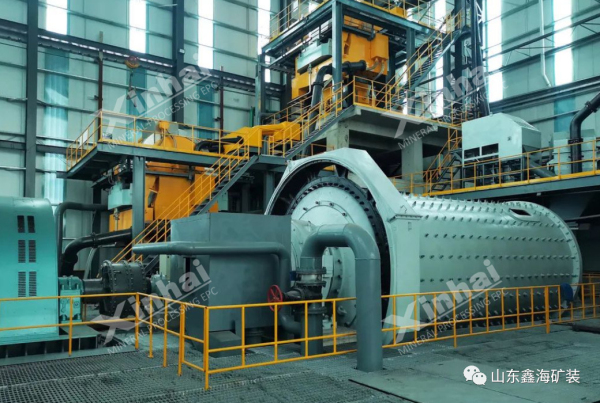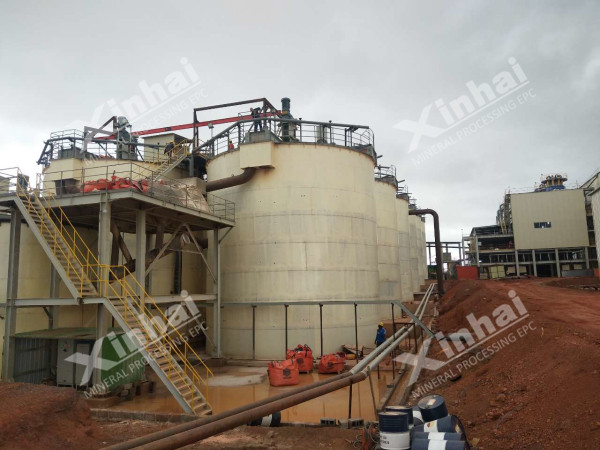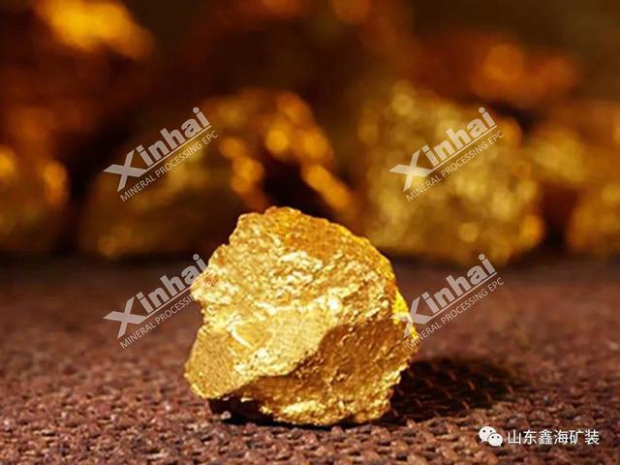The resin-in-pulp method, like the carbon slurry method, belongs to the non-filtration gold extraction process. At present, it is mainly used for complex ores such as clay, graphite, asphalt shale, iron oxide and other natural adsorbents, and arsenic-gold ores, which are difficult to be separated by traditional cyanidation processes. Gold ore. The following is the process flow of resin-in-pulp gold extraction.

The raw ore is fed into the jaw crusher by the ore feeder for coarse crushing, and the coarsely crushed products are fed into the circular vibrating screen by the belt conveyor for screening. The finely crushed products also enter the coarsely crushed product belt conveyor, and are fed into the vibrating screen for screening. The particle size of the material under the sieve is 0-10mm, which is sent to the powder ore bin by the belt conveyor for grinding. Therefore, a two-stage one-closed-circuit crushing stage constitutes.

The material in the powder ore bin is fed from the feeder to the ball mill feeder belt conveyor, and then sent to the first-stage ball mill for grinding, the first-stage grinding discharge flows into the spiral classifier for classification, and the classifier returns to the first-stage mill for regrinding. The overflow of the classifier is pumped into the hydrocyclone for secondary classification, and the hydrocyclone settles into the second-stage ball mill for second-stage grinding. The overflow of the cyclone flows through the de-dusting screen and then flows into the concentrator to concentrate before leaching. The overflow is used as return water and returned to the grinding for reuse.

The underflow concentration of the thickener is 40%, and it is pumped into the leaching tank containing resin for immersion and suction. The leaching pulp is recovered by the safety screen and then pumped into the filter press workshop for pressure filtration; the filter cake is sent to the tailings pond for dry storage, and the filtrate is returned to the production process for reuse. The resin is transported in reverse series by the air lifter, and the gold-loaded resin extracted from the front leaching tank is sent to desorption and electrolysis. The desorbed resin is regenerated and activated and returned to the leaching and adsorption operation.
Leaching and adsorption operating conditions: the grinding fineness is -0.074mm, accounting for 92%, the pulp concentration is 38% to 40%, the amount of calcium oxide is 4kg/t, the amount of sodium cyanide is 2kg/t, and the leaching time is 40h (10 Section), the resin model is D301G macroporous weak base type anion exchange resin, and the resin density in the pulp is 30kg/m3.
The tailings slurry enters the filter press workshop and is filtered by a box filter press. The filter cake is sent to the tailings pond for dry storage, and the filtrate is returned to the process for recycling.
Being washing with clean water, the gold-loaded resin flows into the gold-loaded resin storage tank, and is transported to the desorption column by adding air and water. The desorption liquid is ammonium thiocyanate and sodium hydroxide, their concentrations are 140-150g/L and 35g/L respectively. The desorption liquid flow rate was 30L/min, the desorption time was 48h, and the desorption temperature was controlled at about 50℃. The pregnant liquid enters the electrolytic cell at a flow rate of 30L/min. The anode of the electrolytic cell is a graphite plate, and the cathode is a polyethylene carbon fiber. The lean liquid after electrolysis flows into the liquid storage tank and is pumped back to the desorption column by a magnetic pump for recycling. A certain amount of ammonium sulphate and sodium hydroxide are added to the lean liquid after each batch of desorption to the end point, as the desorption liquid for the next desorption. The processing capacity of each batch of resin is 4.24m3, the grade of gold-loaded resin is 2500g/t, and the amount of desorbed metal per column is 3500g.
The desorbed lean resin is put into the high-level regeneration tank, washed with clean water until it becomes neutral. After washing, add 2 to 3 times the resin volume and 5% hydrochloric acid solution to soak for 10 hours, then wash with clean water until neutral, and then use the resin volume 2~ Soak in 3 times, 2% sodium hydroxide solution for 10 hours, wash with clean water, sieve the crushed resin with a vibrating screen, pour the resin on the screen into the poor resin storage tank, add air and water in batches and transport it to No. 10 soaking and suction tank for recycling in the leaching adsorption system.
Resin regeneration operating conditions: the concentration of hydrochloric acid is 5%, the pickling time is 10h, the concentration of sodium hydroxide is 2%, the alkali washing time is 10h, and the amount of soaking liquid is 0.01m3/kg.

After electrolysis process, the electrolytic gold mud with grade of about 70% is sent to the alchemy room. After the gold mud is repeatedly washed and de-slimed with water, it is dried, roughly smelted and cast into alloy gold ingots, mixed with silver powder, and then melted, and then splashed with beads and nitric acid. The amount of gold and silver is separated, and the gold powder is washed and ingots are cast.